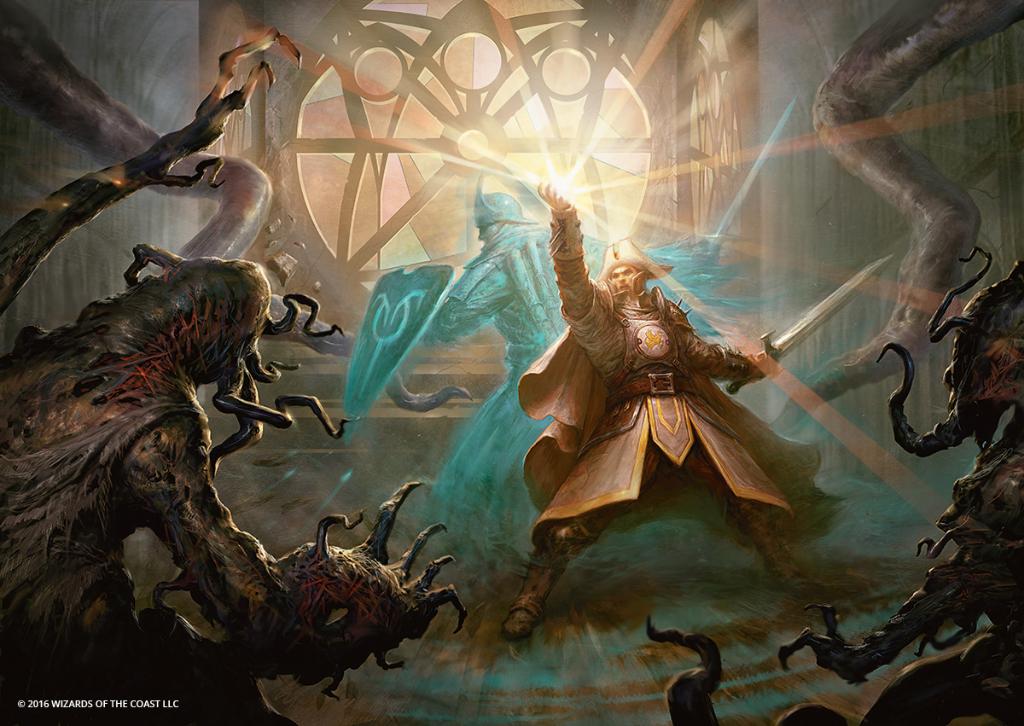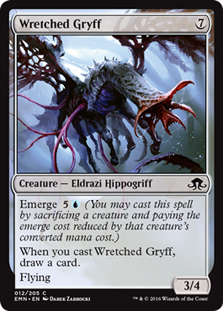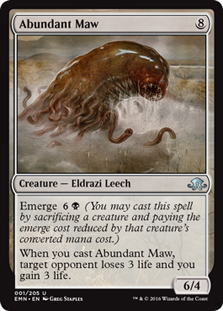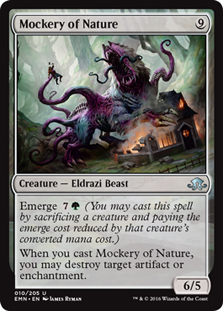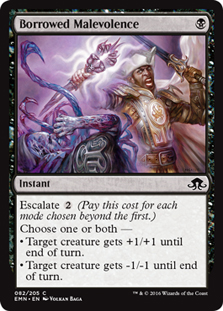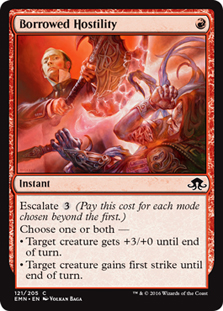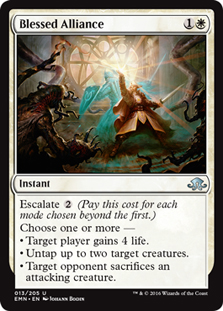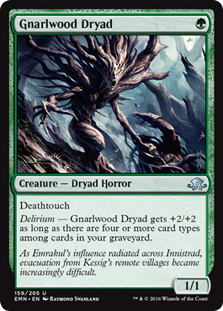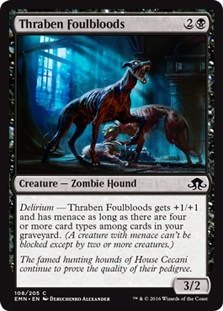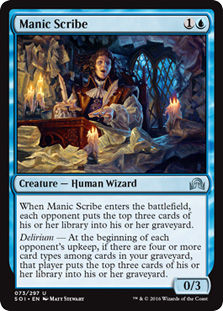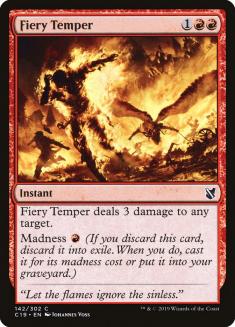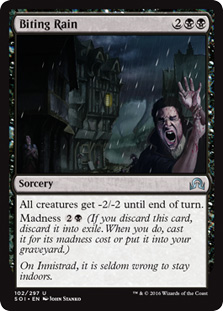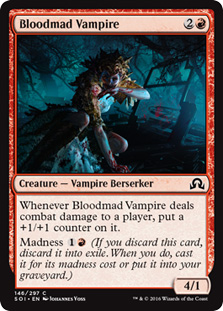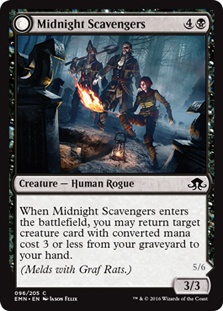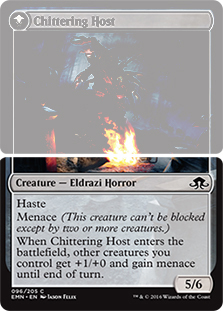Personally, I absolutely love Remastered sets for Limited. Not only are we having the cards tailored for a more enjoyable format, we’re also breaking new ground in the digital space, with things like rotating subsets (more on that later), which I can foresee being a huge success for future Remastered sets. There’s a lot going on with Shadows Over Innistrad Remastered, aka SIR, so let’s do a bird’s-eye view of what to expect!
Emerge
Emerge was one of the debut mechanics for Eldritch Moon. Essentially, they’re creatures with two mana cost options: an overpriced, colorless, vanilla option, or a spicy synergy bargain that you may regret later that evening. There are some fun synergies with these big beaters, and thankfully they did not reprint Lashweed Lurker.
Escalate
Escalate was another Eldritch Moon mechanic, building off (escalating) the existing entwine mechanic. The commons basically function as split cards of sorts, as they only have two options to choose from. Blessed Alliance and the rare cycle can escalate further with three options, allowing you to get the full entrée, or order à la carte!
Delirium
Delirium is a more nuanced take on the now 22-year-old (yikes!) mechanic, threshold. Delirium isn’t concerned about the size of your graveyard, but the contents within (and the motion of the ocean, of course). There are plenty of fun graveyard shenanigans to explore, and if you’re able to assemble delirium by the mid-game, cards like Obsessive Skinner can easily take over. Any conjurer of cheap tricks can get creatures and instants into their graveyard. A true wizard knows the value of cards like Terrarion or Vessel of Nascency!
Madness
Madness is one of my favorite magic mechanics, likely based on my love for the U/G Madness deck (it predated the term “Simic”). Madness was relegated to Rakdos after Basking Rootwalla got too much time in the sun. SIR offers a lot of discard options, as well as some Wild Mongrel impersonators that will allow you to discard for free at instant speed, like Insolent Neonate or Olivia’s Dragoon, allowing you to ambush your opponent with cards like Gisa’s Bidding.
Meld
Not too much to talk about here as there’s only a pair of these creatures. Midnight Scavengers has been shifted up to uncommon. Neither card is amazing on its own, but I assume that design used some form of witchcraft or boring math to determine that it might happen too often compared to previous SOI/SOI/EMN drafts.
Other Rarity Shifts
I know the designers would love to change the text on the cards being digitized to create a perfect format, but the existing card texts remain intact. A very nice workaround is changing the rarities of cards to improve the overall experience. There are both upshifts and downshifts to promote a more cohesive environment ten years later. After all, Deathcap Cultivator (now uncommon) wouldn’t be a rare I’m excited to open after ten years of power creep.
Shadows of the Past
Similarly to Alchemy drafts, there is a secondary set of cards that we’re going to see, named Shadows of the Past. There’s a total of 76 cards in this “bonus sheet” set, and they are split up into four rotating groups, each with its own theme. Each subset will be integrated into draft booster packs during its assigned week, making a small impact on the overall metagame for the week. Unlike Alchemy, these won’t be guaranteed to show up in each pack, and the cards will show up in the proper rarity slots.
The Magic website outlines what cards will show up during which week, but doesn’t have a great visual view that I could find, so I made one for the first week.
If you take a look at the totality of Shadows of the Past, it consists of bomb rares and the most powerful commons and uncommons. Honestly, it’s a very clever idea of how to import the powerful cards into Arena, while doing the best job to ensure a fun Limited environment, now with 75% less Spider Spawning!
I’m really excited to start jamming this set, and I hope this article helps to explain what it’s going to look like.
As always – Lose and Learn, Learn and Win.

